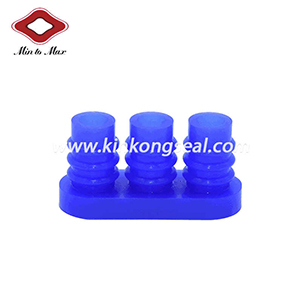Jul. 02, 2020
Sixth, the application of thermoplastic elastomers in seals
As we all know, thermoplastic elastomer (thermoplastic elastomer) is also called thermoplastic rubber (TPR). This material is a combination of rubber and thermoplastic. It has the high elasticity properties of vulcanized rubber at room temperature, and at a certain high temperature, it can be used as a high-grade material for plastic molding like a thermoplastic resin. Its "gender" characteristics have injected new power into the polymer world, and some people say that it is the so-called "third-generation rubber" after natural rubber and synthetic rubber. It is a new polymer material between rubber and resin. It can not only replace part of the rubber but also modify the plastic. Its family is large, collectively known as TPE or TPR. The structural characteristics of thermoplastic elastomer polymer chains are composed of resin segments (hard segments) and rubber segments (soft segments) with different chemical compositions.
The force between the hard segments can form physical cross-links, while the soft segment is a highly elastic segment with greater free rotation capacity; the soft and hard segments are arranged in an appropriate order and connected in an appropriate manner. In particular, the physical connection of this hard segment is reversible, that is, at a certain temperature, it will lose the ability to restrain large portions, and it will show plasticity at this time. And when it drops to normal temperature, these links are restored again and appear like a cross-linking point effect of vulcanized rubber. This characteristic makes TPE have the dual performance of rubber and plastic. It can produce products through traditional plastic processing equipment without energy-consuming and complicated vulcanization processes. It can also be used to modify plastics.
There are many classification methods for thermoplastic elastomers. Generally, they are classified according to production methods. One type is chemically synthesized thermoplastic elastomers, which are composed of blocks of different chemical components. One type is a blended thermoplastic elastomer, that is, the elastomer and resin are processed by mechanical blending.
According to the composition of thermoplastic elastomer, it can be divided into styrene (TPS), polyolefin (TPO). Polyurethanes (TPU), polyesters (TPE), polyamides (TPAE), silicones, organic fluorine, and acrylics. Among them, a styrene-based thermoplastic elastomer is the most widely used, but it is rarely used in sealing accessories. The thermoplastic elastomer TPV that is currently used in automobiles is a sealing strip, including roof seals and windshield seals. Skylights, roofline seals. Rear window and trunk, door divider, main door, auxiliary door seals, lamp seals, door baffles, reflector frame seals, engine hood to radiator seals, etc. These seals used to be made of EPDM Manufacture, and now can be replaced with thermoplastic elastomer. At the same time, TPV sealing products are also used in shipping containers and are used as materials for international shipping container sealing regulations. This is mainly because TPV has a long service life, is environmentally friendly, and has reversible recycling, which is slightly better than custom rubber components processed by thermally vulcanized EPDM rubber.

Custom Rubber Components
Sealed composite materials with TPU as the main material are also very versatile. For example, for the production of inflatable bladders, the mechanical properties of the materials are much better than rubber. In recent years, new types of thermoplastic elastomers have been continuously developed. Among them, silicone TPEs have developed rapidly. For example, block copolymers of polystyrene and polydimethylsiloxane can be processed without adding white carbon black and thermal vulcanization. Be weather resistant. Ozone resistant, low temperature resistant, and highly elastic products. There is also a vulcanized acrylate elastomer, which is processed into a seal and can work with fuel at 150 degrees Celsius. It can work normally. It can also be used to make various vehicle bearing seals and transmission device sealing elements.
The other type is a little-known thermoplastic elastomer called polynorbornene, also known as polynorbornene rubber. When it is combined with high-damping damping rubber, it will play a role in damping performance. Obviously, it has been used in rubber shock-absorbing parts for high-end compressors.
Silicone Rubber Wire Seal combined with a thermoplastic elastomer, take advantage of the shortcomings, it will better serve human beings.
Tel: +86 13705057546
E-mail: info@kinkong.com
Add: #27 Hengjing Xiyi Road, Liushi Town, Yueqing City, Zhejiang Province, 325604, China.
Copyright © Min To Max All Rights Reserved |